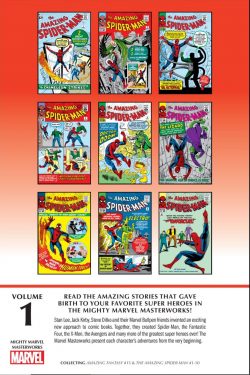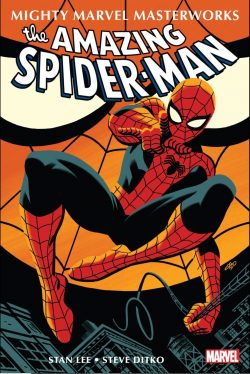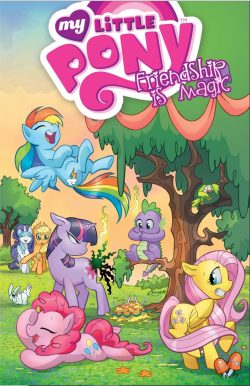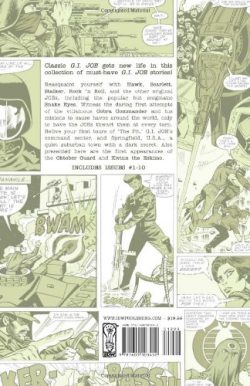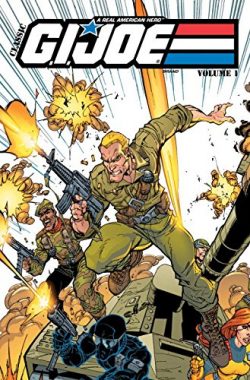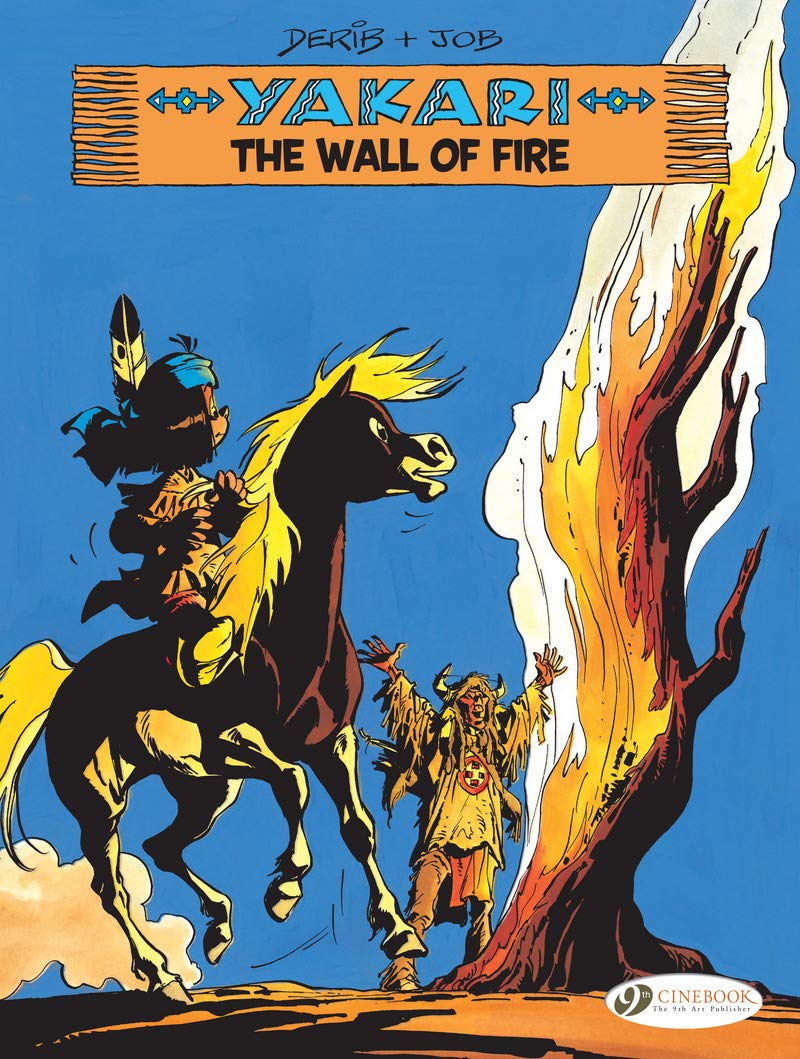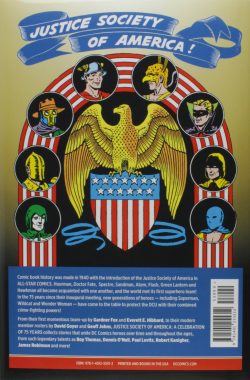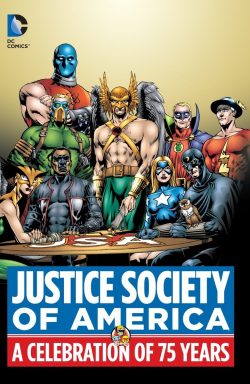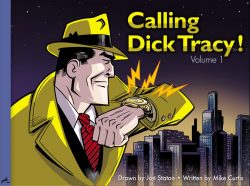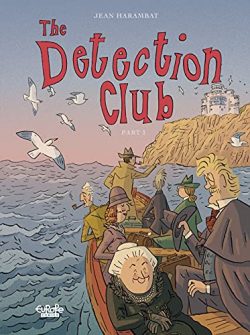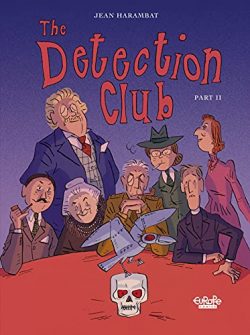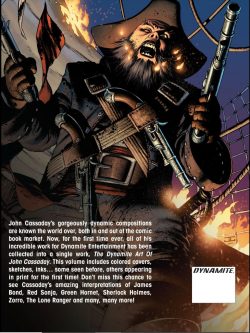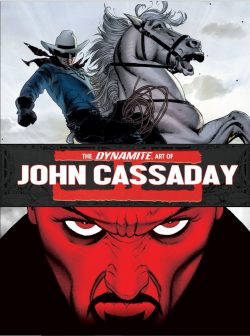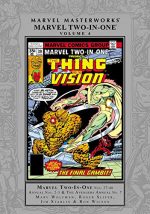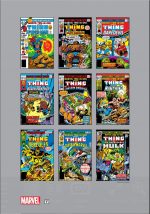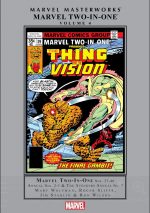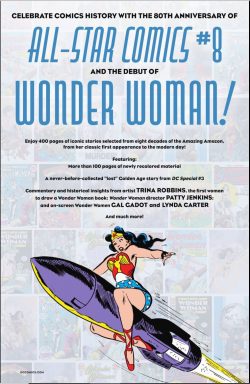
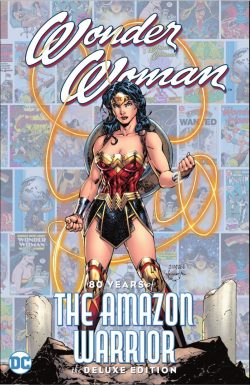
By William Moulton Marston & Harry G. Peter, Trina Robbins, Joye Hummel, Robert Kanigher, Samuel R. Delany, Cary Bates, Roy Thomas, George Pérez, Len Wein, Lynda Carter, William Messner-Loebs, Phil Jimenez,Joe Kelly, Allan Heinberg, Amanda Conner, Brian Azzarello, Mariko Tamaki, Greg Rucka, Becky Cloonan & Michael W. Conrad, Patty Jenkins, Ross Andru & Mike Esposito, Dick Giordano, Don Heck, Gene Colan, Jill Thompson, Lee Moder, Gary Frank, Cliff Chiang, Elena Casagrande, Nicola Scott, Jen Bartel & various (DC Comics)
ISBN: 978-1-7795-1157-7 (HB)
Win’s Christmas Gift Recommendation: Classic Triumphs of Wondrous Empowerment… 9/10
Without doubt Wonder Woman is the very acme of female role models. Since her premier in 1941 she has permeated every aspect of global consciousness and become not only a paradigm of comics’ very fabric but also a symbol to women everywhere. In whatever era you observe, the Amazing Amazon epitomises the eternal balance between Brains and Brawn and, over those decades, has become one of that rarefied pantheon of literary creations to achieve meta-reality.
For decades, the official story was that the Princess of Paradise Island was conceived by psychologist and polygraph pioneer William Moulton Marston: a calculated attempt to offer girls a positive and forceful role model and – for forward-thinking Editor M.C. Gaines – a sound move to sell more funnybooks to girls. From a guest shot in All Star Comics the Amazon immediately catapulted one month later into her own series and the cover-spot of new anthology title Sensation Comics.
An instant hit, Wonder Woman won her eponymous supplemental title a few months later (cover-dated summer 1942). That set up enabled the Star-Spangled Sensation to weather the vicissitudes of the notoriously transient comic book marketplace and survive beyond the Golden Age of costumed heroes beside Superman, Batman and a few lucky hangers-on who inhabited the backs of their titles.
We now know that Wonder Woman was a team if not truly communal effort, with Moulton Marston acting at the behest of his remarkable wife Elizabeth and their life partner Olive Byrne. Barring a couple of early fill-ins by Frank Godwin, the vast majority of outlandish, eccentric, thematically barbed adventures they collectively penned were limned by classical illustrator Harry G. Peter.
This stunning compilation is part of a series introducing and exploring the historical and cultural pedigree of venerable DC icons. Available in hardback and digital formats, it offers a sequence of sublime snapshots detailing how Diana of the Amazons has evolved and thrived in worlds and times where women were generally regarded as second class, second rate, painfully functional or strictly ornamental.
It re-presents material from All-Star Comics #8; Sensation Comics #1; Wonder Woman volume 1 #5, 78, 98, 124, 162, 203, 206; Comic Cavalcade #11; DC Special #3; DC Comics Presents #41; Wonder Woman volume 2 #6, 57, 73, 170;Wonder Woman Annual #1, Wonder Woman volume 4 #23; Wonder Woman #600, 750; Future State: Immortal Wonder Woman #1 and 2: cumulatively covering July 1940 to February 2021. The comics stories are augmented throughout by essays and brief critical analyses from significant personages linked with the Amazon, but we begin with the origin…
‘Introducing Wonder Woman’ was an extra story in All Star Comics #8 (cover-dated December 1941/January 1942), home of the mighty and popular Justice Society of America, and led directly to ‘Wonder Woman Comes to America’: her formal debut in Sensation Comics #1 (January 1942). In combination they reveal how, once upon a time on a hidden island of immortal super-women, American aviator Steve Trevor of US Army Intelligence crashes to Earth. Near death, he is nursed back to health by young, impressionable Princess Diana.
Fearful of her besotted child’s growing obsession with the creature from a long-forgotten and madly violent world, Diana’s mother Queen Hippolyte reveals the hidden history of the Amazons: how they were seduced and betrayed by men but rescued by the goddess Aphrodite on condition that they forever isolate themselves from the mortal world: devoting their eternal lives to becoming ideal rational beings.
However, after Trevor explains the perfidious spy plot which accidentally brought him to the Island enclave and how the planet is in crisis, Athena and Aphrodite instruct the Queen to send an Amazon back with the American to fight for global freedom and liberty. Hippolyte declares an open contest to find the best candidate and, despite being forbidden to compete, young closeted, cosseted Diana clandestinely overcomes all other candidates to become their emissary.
Accepting the will of the gods, the worried mother outfits Diana in the guise of Wonder Woman and sends her out to Man’s World armed with an arsenal of super-scientific and magical weapons…
Leading from the front in her own series in anthological Sensation Comics, the first tale resumed where the introduction left off. ‘Wonder Woman Comes to America’ sees the eager culture-shocked immigrant returning the recuperating Trevor to Man’s World before trouncing a gang of bank robbers and briefly falling in with a show business swindler.
An intriguing innovation was her buying her secret identity from lovelorn Army nurse Diana Prince, elegantly allowing the Amazon to be close to Steve whilst enabling the heartsick medic to join her fiancé in South America. Even with all that going on, there was still room for Wonder Woman and Captain Trevor to bust up a spy ring attempting to use poison gas on a Draft Induction centre. Typically, Steve breaks his leg and ends up in hospital again, where “Nurse Prince†looks after him…
New Diana gained a position with Army Intelligence as secretary to General Darnell, further ensuring she would always be able to watch over her beloved. She little suspected that, although painfully shallow Steve only had eyes for the dazzling superwoman, the General had fallen for mousy but supremely competent Lieutenant Prince…
As previously mentioned, the Amazing Amazon was a huge and ever-growing hit, gaining her own title in late Spring of 1942 (cover-dated Summer). This comic frequently innovated with full-length stories, and the extract here – the opening chapter of Wonder Woman #5, June/July 1943 – presented an interlinked epic: the ‘Battle for Womanhood’ that had repercussion for the cast for decades to come.
War-god Mars (who had instigated the World War from his HQ on the red planet through earthly pawns Hitler, Mussoliniand Hirohito) returns to plague humanity directly, this time enlisting the aid of a brilliant but physically deformed and intellectually demented woman-hating psychologist with psychic powers. Tormented Dr. Psycho uses his gifts to marry and dominate a medium named Marva, employing her unique abilities to form ectoplasmic bodies as he seeks to enslave every woman on Earth. Allegorical or what, huh?
Veteran cartoonist and herself something of a feminist icon, Trina Robbins shares her thoughts on ‘Wonder Woman’before the Golden Age delights resume with ‘The Cheetah Returns!’ (Comics Cavalcade #11, Summer1945) as the savage miscreant and symbol of selfish, chaotic wilfulness wreaks havoc after escaping prison and replacing her remarkably similar-seeming cousin…
Drawn by Peter, this tale was scripted by another lost author – Joye Hummel. Born in 1924 and forgotten for decades, she ghost-wrote at least 70 Wonder Woman stories between 1944 and 1947 as Marston gradually succumbed to cancer. She left, ostensibly to raise a family but apparently because themes of universal female autonomy were being editorially edged out by male management…
The dawn era of superheroes was drawing to a close and fantasy was giving way to grittier, more manly themes. Included here is a rare treat, as ‘The Cheetah’s Thought Prisoners’ finds the cat criminal released on a legal technicality and using Amazon thought modification to torment and dominate her archenemy and friends.
With the author unknown – could it be Hummel? – this H.G. Peter yarn was scheduled for Comic Cavalcade but shelved when that quarterly became a funny animal title. Eventually exhumed and published in reprint giant DC Special #3 (June 1969), it shows the dangerous power of a woman in command!
By the time of Wonder Woman #78 (November 1955) Robert Kanigher was scripting Diana’s dramas and ‘Zero Hour for an Amazon!’ sees her struggling but triumphing after all her magic weapons malfunction: a standard tale as the author sought to maintain the series status quo.
Utilising group nom de plume Charles Moulton, Marston – and his collaborators, albeit with the women uniformly unacknowledged and uncredited for decades – generated the Amazon’s amazing exploits until his death in 1947, whereupon Kanigher ultimately assumed command with the venerable Peter soldiering on until his own death in 1958. Wonder Woman #97 – in April of that year – was his last hurrah and the end of an era.
Ross Andru & Mike Esposito had debuted as cover artists 3 issues earlier, but with the opening inclusion of Wonder Woman #98, took over the visual component whilst Kanigher reinvented much of the old mythology and even tinkered with her origins.
Whilst costumed colleagues foundered, Wonder Woman soldiered on well into the Silver Age and far beyond it, benefitting from constant revisionism under Kanigher’s canny auspices: re-energising her for the Silver Age renaissance and beyond…
With the exception of DC’s “Trinity†(plus those few innocuous back-up features like Aquaman and Green Arrow), superheroes all but vanished at the end of the 1940s, replaced by mostly mortal champions in a deluge of anthologised genre titles. Everything changed again after Showcase #4 rekindled the public’s interest in costumed crimebusters with a new iteration of The Flash in 1956.
From the moment those fanciful floodgates opened wide once more, and whilst re-inventing Golden Age Greats such as Green Lantern, The Atom and Hawkman, National/DC began updating the venerable veteran survivors who had weathered the 1950s backlash – none more so than the ever-resilient Amazon.
As editor, Kanigher had always tweaked or reinvented much of the original mythos, but now his tinkering with her origins unleashed a very enthusiastic yet motherly Diana on an unsuspecting world in a fanciful blend of girlish whimsy, rampant sexism, strange romance, alien invasion, monster-mashing, utterly surreal almost stream-of-consciousness storytelling. This was at a time when all DC’s newly revived, revised or reinvented costumed champions were getting together and teaming up at the drop of a hat – as indeed was the Princess of Power – in Justice League of America. However, within the pages of her own title, a timeless, isolated fantasy universe was carrying on much as it always had. Here, that transition is marked by ‘The Million Dollar Penny!’ from #98 (May 1958) with Kanigher, Andru & Esposito reinventing the mythology and adjusting her origins…
When goddess Athena visits an island of super-scientific, immortal women, she informs Queen Hippolyta that she must send an emissary and champion of justice to crime-ridden “Man’s World.â€
Declaring an open competition for the job, the queen isn’t surprised when her daughter Diana wins. She is then given the task of turning one penny into a million dollars in a day – all profits going to children’s charities, of course…
Just as the new Wonder Woman commences her coin chore, American airman Steve Trevor bails out of his malfunctioning jet high above the magically hidden isle, unaware that should any male set foot on Amazon soil the immortals would lose all their powers. Promptly thwarting impending disaster, Diana and Steve team up to accomplish her task, encountering along the way ‘The Undersea Menace’ before building ‘The Impossible Bridge!’…
Following a chat about the comic champion’s real world influence ‘In Conversation with Gal Godot’, mythic madness resumes with ‘The Impossible Day!’ (WW #124, August 1961).
Amazon science (and the unfettered imagination of Kanigher, for whom slavish continuity, consistency or rationality were never as important as strong plots or breathtaking visuals) had already enabled readers to share the adventures of the teenaged Wonder Girl and toddler Wonder Tot both in their appropriate time-zones and, on occasion, teamed together on “Impossible Daysâ€.
Here Tot, Teen and adult teamed together against shape-shifting nuclear threat Multiple Man, with the threat or promise of more pairings to come…
As the 1960s progressed Wonder Woman was looking tired and increasingly out of step with the rest of National/DC’s gradually gelling – and ultimately cohesively shared – continuity but, by the decade’s close, a radical overhaul was on the cards – but before looking forward, the company turned back…
Kanigher never forgot he was writing comic books and constantly pointed it out to the readership – even though their preference might not be to have narrative rules, and suspension of disbelief flouted whilst fourth walls were continually broached. In #158 (not included here), he gathered the entire – vast – series cast in his office and told them that most were fired. Readers were then challenged to guess who would be back for the Big Change…
The promised reboot consisted of a full switch to the faux 1940’s stories mimicking the triumphs of the Golden Age.
‘The Startling Secret of Diana Prince!’ opened WW #162, (May 1966) by reworking Sensation Comics #1, relating again how the Paradise Island Émigré purchased the identity and papers of lovelorn Army Nurse Diana Prince to be close to Trevor at all times…
By 1968 superhero comics were again in deep decline and publishers sought new ways to stay profitable – or even just in business – as audience tastes and American society evolved. Back then, with the industry dependent on newsstand sales, if you weren’t popular, you died.
Handing over the increasingly moribund title to Editor Jack Miller and Mike Sekowsky, the bosses sat back and waited for their eventual failure, and prepared to cancel the only female superhero in the marketplace. Sekowsky’s unique visualisation of the JLA had contributed to that title’s overwhelming success, and at this time he was stretching himself with a number of experimental projects, focussed on teen and youth-markets.
With scripter Denny O’Neil, he killed Steve Trevor, removed the Amazons and Paradise Island, taking with them all their magic and paraphernalia – including Diana’s astounding weapons, Invisible Plane, Golden Lasso and mighty superpowers. Despite all that, her love for Steve compelled her to remain on Earth. Effectively becoming her own secret identity of Diana Prince, the now-mortal champion resolved to fight injustice as a human would…
Sekowsky’s root and branch overhaul offered a whole new kind of Wonder Woman (one heavily based on TV character Emma Peel) but, as always, fashion ruled and in a few years, without any fanfare or warning, everything that had happened since Wonder Woman lost her powers was unwritten.
From that period comes the last adventure of Diana Prince, with celebrated novelist Samuel R. Delaney joining Dick Giordano to take the hero – abortively – in a fascinating new direction. Socially-aware polemic ‘The Grandee Caper’(December 1972) sees Ms. Prince championing underpaid, bullied and exploited department store workers (all women because they can be legally paid less) in a tale that pulls no punches, offers no easy solutions and can’t even manage a happy ending…
A true landmark in every way, it was immediately scuppered as – without warning or explanation – the superpowered Amazon was back in the next issue. Not included here but crucial to know is that in #204, her mythical origins were revised and re-established as she abruptly returned to a world of immortals, gods, magic monster and super-villains. There was even a new nemesis: an Greco-African American half-sister named Nubia…
Such an abrupt reversal had tongues wagging and heads spinning in fan circles. Had the series offended some shady “higher-ups†who didn’t want controversy or a shake-up of the status quo?
Probably not.
Sales were never great even on Sekowsky’s run and the most logical reason is probably television. Wonder Woman had been under option since the 1966 Batman TV show and by this time (1973) production had begun on an original pilot featuring Cathy Lee Crosby. An rapid return to the character most viewers were familiar with from their own childhoods seems perfectly logical to me. By the time Linda Carter made the concept work in 1975, Wonder Woman was once again “Stronger than Hercules, swifter than Mercury and more beautiful than Aphroditeâ€â€¦
Eventually however – after the TV-inspired sales boost ended with the show’s cancellation – the comic slumped into another decline, leading to another revamp. Showcasing that tenuous era is ‘War of the Wonder Women!’ from #206, (July 1973) in which Cary Bates, Don Heck & Vince Colletta pit the Amazon and Nubia against war god Mars and discover the origins of Diana’s long-lost twin sister…
Another relaunch and return to past glory came in DC Comics Presents #41 (January 1982) as a “Prevue†insert by Roy Thomas, Gene Colan & Romeo Tanghal offered (‘A Bold New Direction for Wonder Woman’). It entailed returning Captain Prince and resurrected Colonel Trevor to military intelligence duty just in time for the Amazon to enjoy a costume tweak and settle old scores with Hercules – the demigod who abused his mother and brought about the first fall of the Amazons…
Those themes were key to the next iteration of the Amazon. Following Crisis on Infinite Earths‘ mass restructuring of continuity, Diana was radically re-imagined for the modern DCU. Her comic series started again from #1, with a February 1987 cover-date, crafted by Greg Potter, George Pérez & Bruce Patterson. The new history revealed how Amazons are actually reincarnated souls of women murdered by men in primordial times. Given potent new form by female Hellenic gods, they thrived in a segregated city of aloof and indomitable women until war god Ares orchestrated their downfall via his demigod dupe Herakles.
Abused, subjugated and despondent, the Amazons were rescued by their patron goddesses in return for eternal penance in isolation on hidden the island of Themyscira.
Into that paradise Diana was born: another murdered soul imbued with life in an infant body made from clay. She excelled in every endeavour and became the Wonder Woman…
After relocating to the outer world, Diana becomes an inspirational figure and global hero whilst constantly trying to integrate and understand the madness of “Patriarch’s Worldâ€, but only after saving all mankind from armageddon…
Concluding the initial story arc, ‘Powerplay’ – by George Pérez, Len Wein & Bruce Patterson from Wonder Woman volume 2 #1, 6 (July 1987) – sees a naive but valiant Diana fighting beside an elderly Steve Trevor who will never be her romantic partner and a select band of mortal friends to stop Ares and his vile children from making mankind destroy itself with nuclear war. Driven by the unbounded creativity and sensitivity of Pérez, this incarnation was possibly the most effective, entertaining and true to the Marston group’s original concept…
‘In Conversation with Gal Godot’ precedes ‘The Fugitive Kind’ (Wonder Woman vol. 2 #57, August 1991) with Pérez scripting for illustrator Jill Thompson & Romeo Tanghal as the Amazon is blamed for a massacre in Gotham City…
William Messner, Lee Moder & Ande Parks take the displaced Amazon further into fresh territory in ‘Losses’ (Wonder Woman vol. 2 #73, April 1993) as Themyscira vanishes from Earth and Diana, deprived of financial support, starts looking for work and a place to live, ignorant of the machinations of a new foe…
Change became a constant and by the time of ‘She’s a Wonder!’ (Wonder Woman vol. 2 #170, July 2001) by Phil Jimenez, Joe Kelly & Andy Lanning, she is again a global celebrity.
This beguiling day-in-the-life tale sees Lois Lane interviewing the superhero/Themysciran cultural ambassador to Mans’s World during a typical day, providing readers with valuable insights into the heroine and the woman.
‘Backstory’ from Wonder Woman Annual #1 (November 2007) has Allan Heinberg, Gary Frank & Jon Sibal set intelligence operatives Diana Prince and Nemesis on the trail of Wonder Woman following her execution of Maxwell Lordduring the Infinite Crisis event: a sharp way of updating the readership in a time of rapid and sweeping change, after which Amanda Conner delivers a sliver of sheer delight as the Amazon and Power Girl hilariously bond over baddie bashing and cat care tips in ‘Fuzzy Logic’ from Wonder Woman #600 (August 2010).
In 2011, the entire DCU was reimagined and Wonder Woman enjoyed one of the biggest upheavals, learning that she was not born from clay but was actually an illegitimate daughter of ever-philandering Zeus. Her life became a melee of shifting alliances or constant battle against outraged deities and fellow demigods culminating in ‘God Down’ (Wonder Woman volume 4 #23, October 2013). Here Brian Azzarello & Cliff Chiang detail the death of gods, defeat of the usurping First Born and the creation of anew god of war after which Wonder Woman #750 (March 2020) provides a brace of tales starting with Mariko Tamaki & Elena Casagrande’s ‘The Interrogation’.
Here Diana again defeats Ares – but in a most unconventional manner – whilst ‘Never Change’ by Greg Rucka & Nicola Scott sees her and former archenemy Circe offer one final chance at redemption and salvation to the monstrous Cheetah…
The comics conclude with a glimpse at a potential tomorrow. Future State: Immortal Wonder Woman #1 and 2 (January & February 2021) reveals how Diana copes with the end of existence in an impossibly distant tomorrow populated by ghosts and hardy survivors – like Superman and Darkseid – in an intriguing continued epic by Becky Cloonan & Michael W, Conrad, & Jen Bartel.
‘In Conversation with Patty Jenkins’ provides some final thoughts from the Wonder Woman. movies’ director to wrap up the celebrations…
Wonder Woman is a primal figure of comic fiction and global symbol, and looks set to remain one. This compilation might not be all of her best material but it is a solid representation of what gave her such fame and should grace any fan’s collection.
© 1941, 1943, 1945, 1955, 1958, 1961, 1966, 1969, 1973, 1982, 1987, 1991, 1993, 2001, 2007, 2010, 2013, 2020, 2021 DC Comics. All Rights Reserved.
